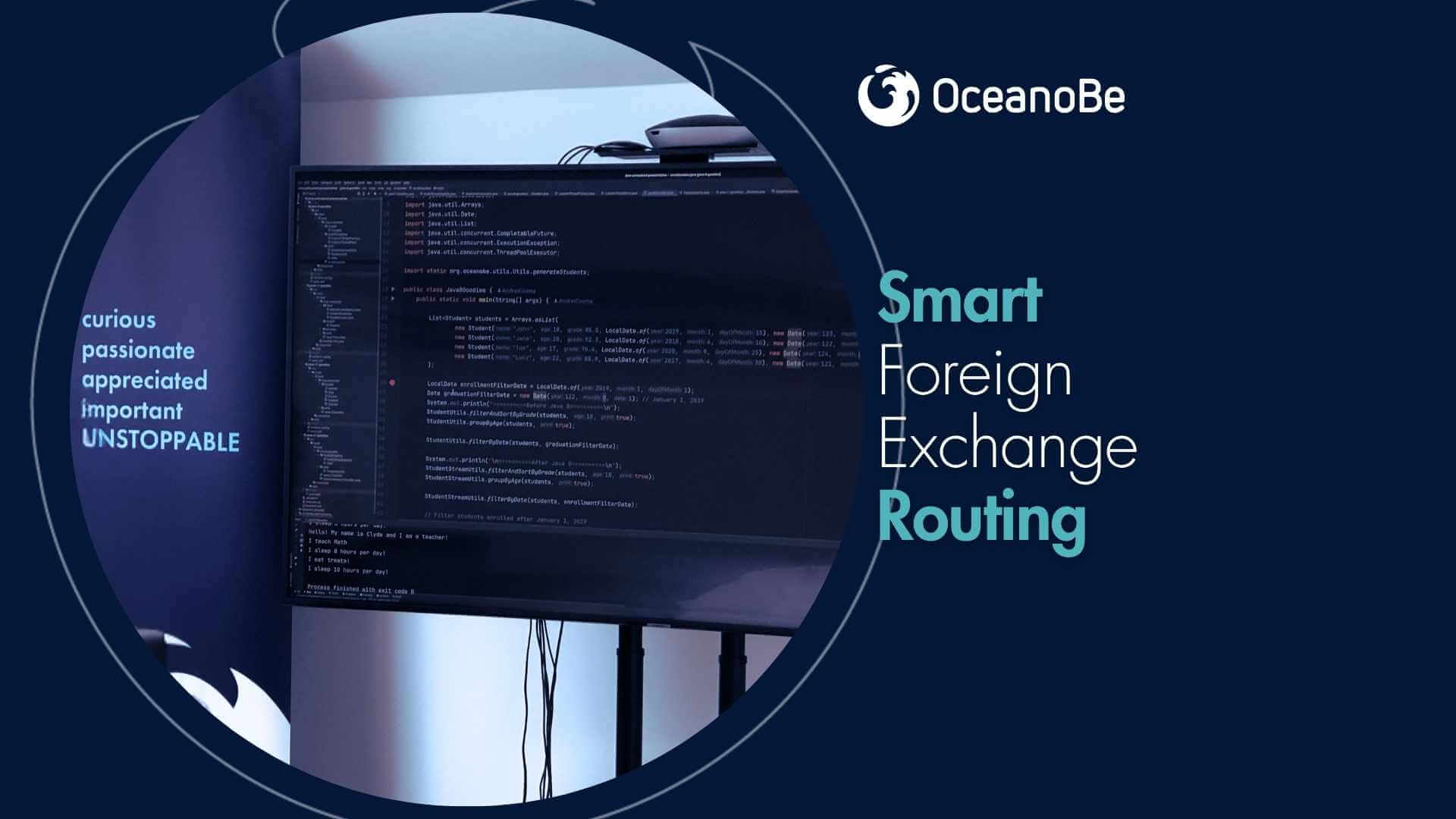Smart Foreign Exchange Routing
For Cross-Border Payment Optimization
For Cross-Border Payment Optimization

Cross-border payments rely usually on fragmented infrastructure, manual interventions, and opaque foreign exchange (FX) markups that create friction and drive up costs.
That’s where smart FX routers come in. Leveraging intelligent routing, real-time rate sourcing, and liquidity aggregation, through smart FX routers enable banking platforms to optimize currency conversion and settlement across borders. But what is smart FX routing, how does it supports cross-border payment innovation, and what kind of architecture and tech stack is required to build and integrate such systems?
A smart FX router is an engine that dynamically selects the optimal currency exchange path for a cross-border payment. It sources real-time FX rates from multiple liquidity providers (LPs), aggregates them, and routes transactions based on:
Unlike static FX pricing tables or bilateral agreements with correspondent banks, smart FX routers continuously evaluate the market and route each transaction to the most cost-efficient, timely, and compliant provider—often within milliseconds.
Cross-border payments have long been riddled with inefficiencies: delayed settlements, hidden fees, lack of visibility, and regulatory overhead. For fintechs and banks, these limitations can result in poor customer experience and lost competitive advantage.
Smart FX routers help address these challenges by enabling:
Competitive rate sourcing from multiple LPs reduces spread.
Clients can see the actual FX rate and markup in real time.
Based on currency pair, country, provider, and availability.
Fewer manual interventions; faster STP (Straight Through Processing).
Use internal or external liquidity pools to handle large flows efficiently.
Building a performant smart FX router requires a robust, modular architecture. Here’s what we typically recommend:
Kafka or RabbitMQ for real-time messaging between modules
Async communication between FX sourcing, pricing, routing, and confirmation
REST/GraphQL API adapters for LP connections
Rate normalization and aggregation layer using Java, Spring Boot, and Redis for caching
Rule engine (e.g. Drools, or custom decision trees in Java)
Real-time SLA evaluation and fallback routing
Dashboards built with React, Grafana, or Kibana for visibility into flows
Optional integration with internal FX liquidity desks or external aggregators (e.g. Currencycloud, Wise Platform, or market makers)
Full traceability of rate selection, provider choice, and execution
PCI DSS and AML trace logs for each transaction
Integration with ISO 20022 messaging formats
Smart FX routers are typically integrated as part of a modular payment orchestration layer. This allows separation of concerns: one module handles payment initiation and customer data, another handles routing and FX, and another handles settlement and reconciliation.
APIs must be secure, auditable, and latency-aware. In regulated environments, it’s essential to log not just the result, but the reasoning behind each routing decision—something smart FX routers are designed to support.
Smart FX routing is more than just a technical improvement—it’s a strategic capability for modern banks and fintechs handling international payments. By intelligently navigating FX rates, liquidity sources, and settlement constraints, these systems unlock both efficiency and transparency in cross-border transactions.
At OceanoBe, we’ve helped fintechs and banks design scalable payment orchestration engines, including modular FX routing layers that can handle millions of daily transactions, while staying compliant and performant.
Want to modernize your FX and cross-border stack? Let’s build smarter together.